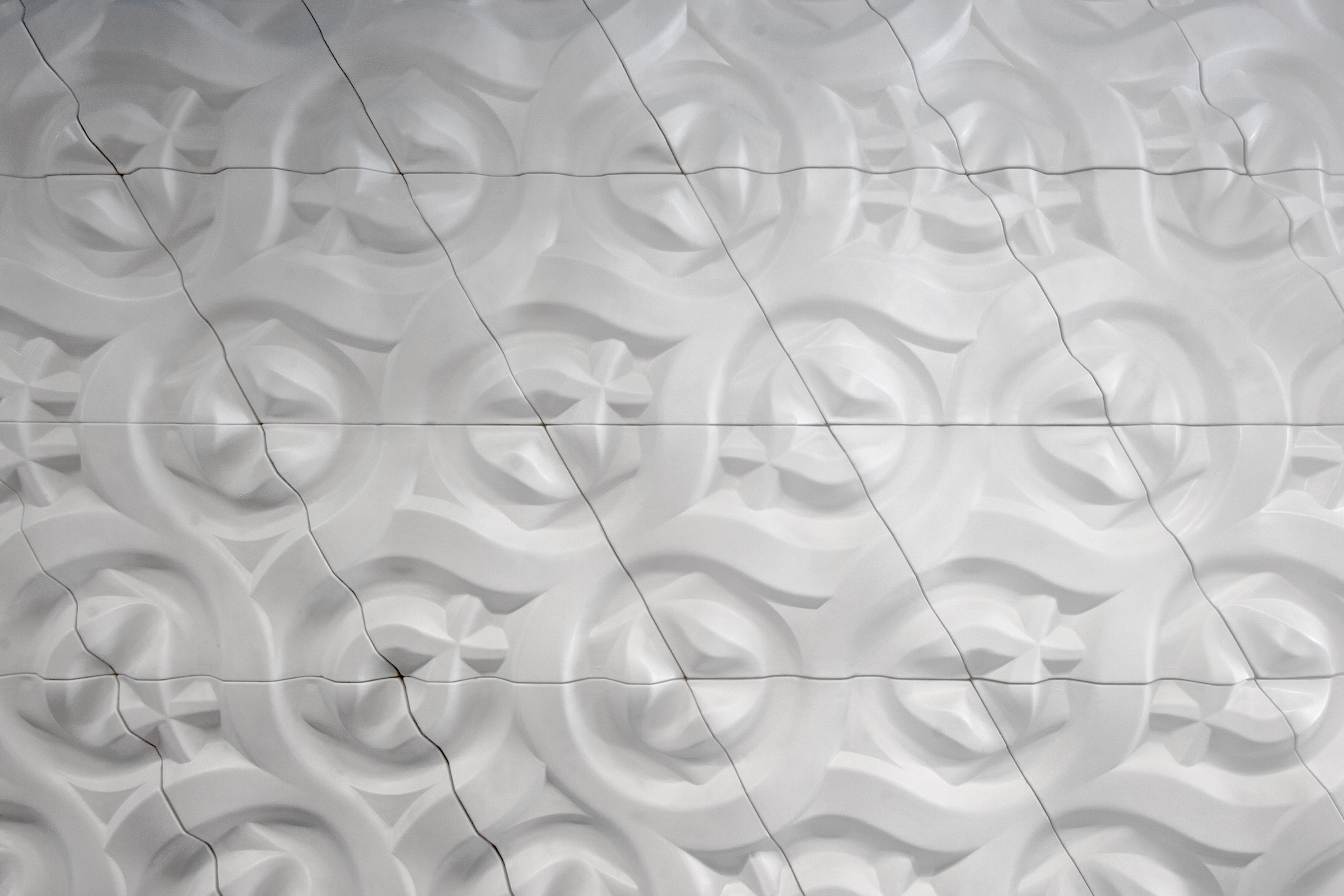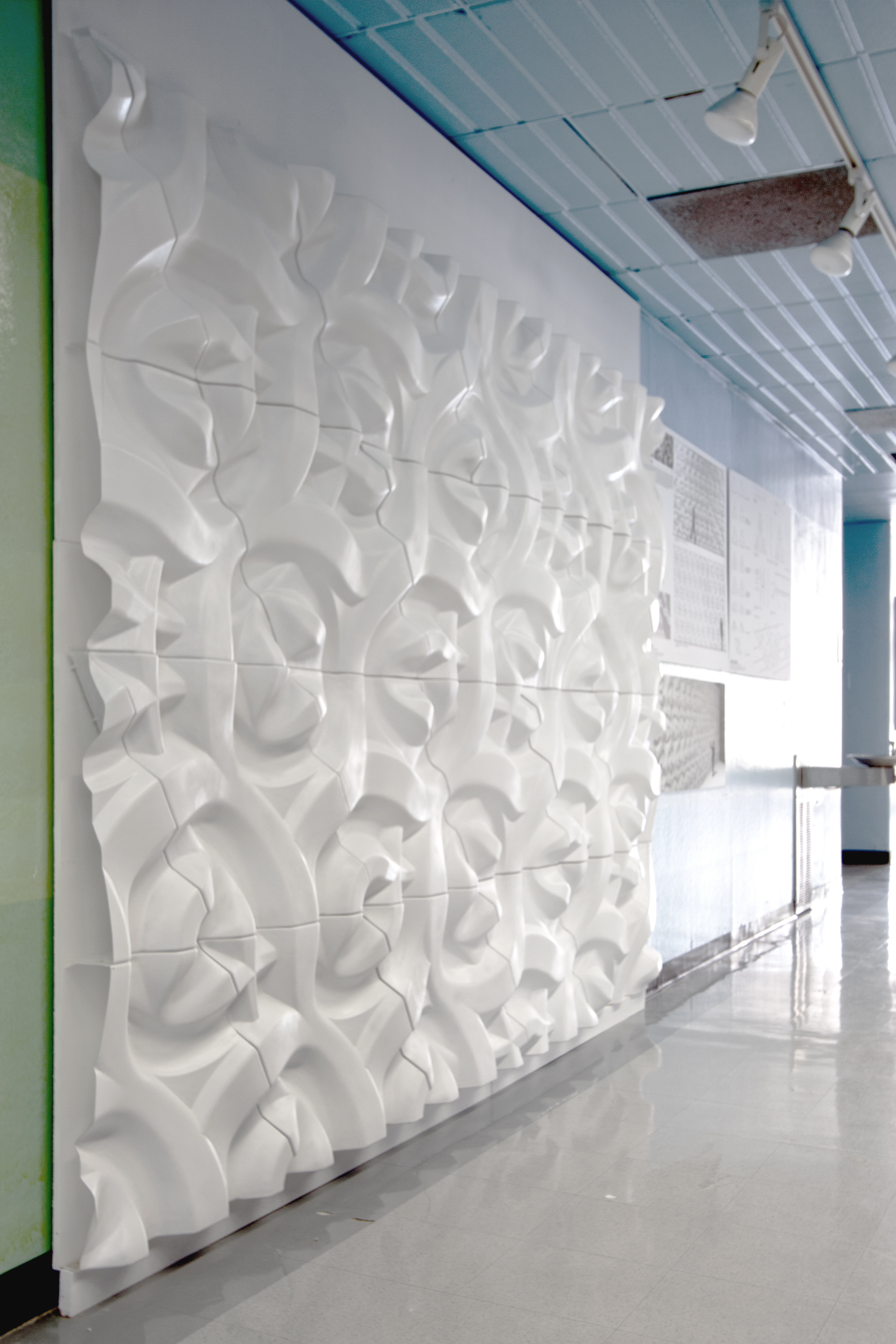Soft Serve
Michael Kmak, Justin Rice, Cristina TomaStrength comes in numbers and variety is the spice of life. With that in mind, Soft Serve seeks to implement a controlled yet highly variable surface condition by coordinating each level of the panel’s details in sets of two. One whole panel is composed of two equal units. These units are chose to occupy two different rotational positions to provide variation throughout the tessellation. Each of these units is assigned an identity in the form a cross-weave or continuous flow. The edges of each unit provide for sectional and tessellation variation through the application of the same didactic principles. The geometry of one edge is generated in contrast to the overall in order to produce gradient changes within the entire system and to blur the geometric hierarchy. The emergent effects of the field couple notions of cool, swirled geometries with inherited local qualities connected by a continuous, overlapping flow.






